Transform from a novice to a Python programming pro with our detailed roadmap, guiding you through every critical stage of Python learning.
More...
Whether you're just starting your Python Programming Journey or looking to refine your coding prowess, our Python Developer Roadmap will equip you with the Advanced Coding Skills needed to thrive in the ever-changing realm of coding.
Key Takeaways
Python Developer Roadmap: a Top Choice for Modern Developers
Python secures its position as a premier language for developers due to its readability, versatility, and thriving community support. Ideal for web development, data science, artificial intelligence, and more, Python's straightforward syntax invites beginners and simplifies complex concepts for experienced programmers alike. It's the versatility and robust set of libraries that make Python indispensable in modern development, forging a path for career growth and innovation.
Among the Popular Programming Languages, Python stands out due to a multitude of Python Advantages that propel developers to build successful Careers in Python Development. Python has emerged as a go-to solution for various domains, including Python for Web Development and Data Science, as developers witness tremendous growth and opportunities.
Python Application Areas | Key Libraries/Frameworks |
|---|---|
Web Development | Django, Flask, Pyramid |
Pandas, NumPy, Scikit-learn | |
Machine Learning | TensorFlow, Keras, PyTorch |
OpenAI Gym, spaCy, NLTK | |
Network Programming | Requests, Scapy, Twisted |
Python's advantages extend beyond its diverse applications. A few prominent benefits of Python include:
- 1Readability: With a syntax similar to English, Python is easy to learn and understand. Its elegant code structure enforces good programming practices and clean code maintenance.
- 2Extensive Libraries & Frameworks: Python boasts a vast selection of libraries and frameworks, simplifying the implementation of complex tasks and reducing development time.
- 3Community Support: Python's large and active community contributes to its ever-growing knowledge base, offering help, guidance, and resources to developers worldwide.
- 4Platform Independence: Python is highly portable, allowing developers to run their code seamlessly across different platforms (Windows, macOS, Linux) with minimal modifications.
- 5Integration Capabilities: Python can easily interface with existing APIs and libraries, enabling smooth integration with multiple components in a software ecosystem.
The Fundamentals for a Python Developer Roadmap User
Commencing your Python journey means grasping the fundamentals, such as variables, data types, and basic operations. Mastering these elements is critical in laying a solid foundation for more complex programming tasks.
Understanding Variables, Data Types, and Basic Operations
In Python programming, variables are used to store values of different data types. The data types that you will encounter most often include:
Python provides numerous basic operations that can be performed on these data types, such as arithmetic operations, string manipulations, and list slicing. Familiarizing yourself with these operations will better equip you to manipulate data effectively in your Python projects.
Control Structures and Loops: The Building Blocks of Logic
Control structures and loops embody the building blocks of programming logic, allowing you to direct the flow of your Python code effectively. Learning how to implement if-else statements, for and while loops, and other control mechanisms will enable you to solve a variety of logical problems and implement algorithms efficiently. We'll teach you these key structures to ensure your ability to execute tasks conditionally and repetitively with precision.
- 1if, elif, and else (conditional statements)
- 2for and while loops (repetition)
- 3break and continue (altering the flow of loops)
Python Libraries and Frameworks for Rookie Python Developer Roadmap Users
For aspiring Python developers, familiarizing themselves with essential libraries and frameworks is imperative. These tools serve as the cornerstone for many beginner-friendly Python projects and provide functionalities for various applications:
Library/Framework | Primary Function |
|---|---|
NumPy  | Mathematical computations |
Pandas  | Data manipulation |
Matplotlib 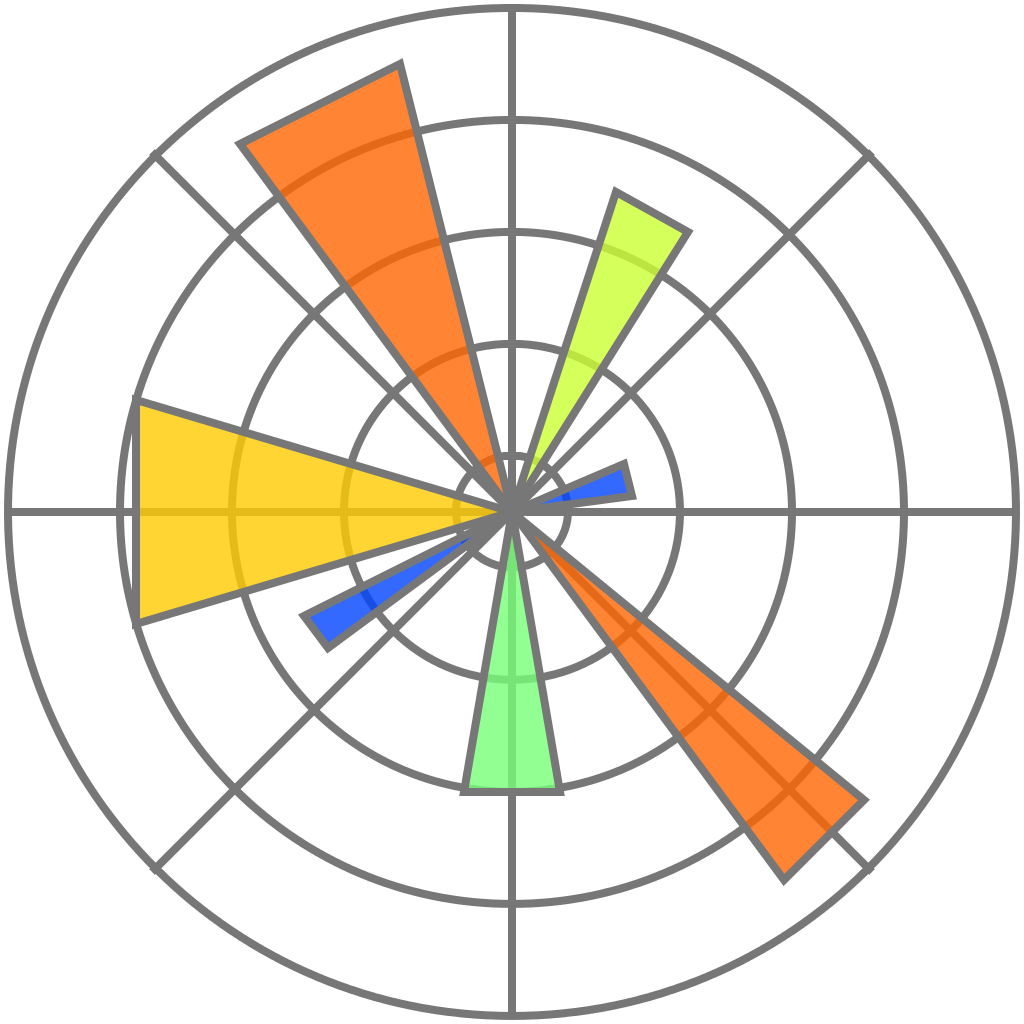 | Data visualization |
Django | Web development |
Flask 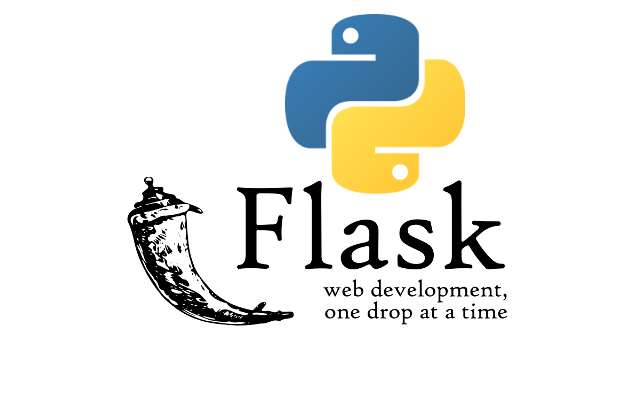 | Web development |
Scikit-learn  | Machine learning |
Intermediate Skills to read a full Python Developer Roadmap
Moving forward on your Python programming journey, it's essential to acquire a comprehensive understanding of intermediate concepts. By doing so, you'll be better equipped to tackle increasingly complex projects and distinguish yourself in the field of Python development. Let's dive into the vital elements of Intermediate Python concepts, Python data structures, error handling in Python, and Python modules and packages.
Advanced Python Data Structures
Beyond basic data types like lists, tuples, and dictionaries, Python provides more advanced data structures to store and manage your data. One such structure is sets, which facilitate the storage of unique elements and allow for efficient set operations like union, intersection, and difference. Another advanced data structure is deque (short for double-ended queue), which grants you the ability to append or remove elements from both ends efficiently. To further expand your knowledge, we'll also explore list comprehensions and lambda functions.
Error Handling in Python
Error handling is an essential skill for any developer, as it enables you to handle exceptions gracefully and prevent your program from crashing abruptly. In Python, this is achieved through the use of try-except blocks. Learning about exception management, including types of exceptions, and appropriately raising and handling them, will empower you to create robust Python scripts.
- 1Understand Python's built-in exceptions.
- 2Implement try-except statements to catch and handle exceptions.
- 3Use the else and finally clauses for additional control during exception handling.
- 4Create and raise custom exceptions for specific use cases.
Python Modules and Packages
Modularity is a crucial aspect of software development, as it promotes code reuse and maintainability. Python encourages modularity through the use of modules and packages. A module is a single file containing Python code, while a package is a collection of modules organized into a directory hierarchy.
To help you unlock the power of modularity and create more organized, reusable code, we'll discuss:
Choosing the Right Environment
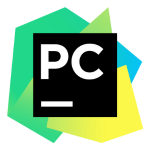
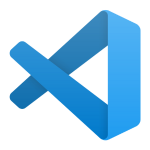
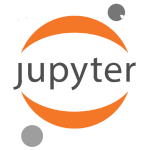
The choice of an IDE or tool often depends on the nature of the project, personal preference, and specific requirements of the development process. While PyCharm might be suited for large-scale projects, VS Code or Jupyter Notebook could be more appropriate for lightweight scripting or data science tasks. It’s important to explore and experiment with different environments to find what best suits your workflow.
In summary, equipping yourself with the right set of tools and understanding how to effectively utilize them can significantly enhance your efficiency and productivity as a Python developer. Whether you’re writing a simple script, developing a complex application, or analyzing data, the correct IDE and toolset will be your allies in every step of your Python journey.
Advanced Concepts in Python Programming
To reach the upper echelons of Python programming, a deep understanding of Object-Oriented Programming (OOP) and design patterns is essential. In this section, we will explore the OOP principles and how to apply common design patterns to tackle sophisticated software development challenges with Python. Additionally, asynchronous programming allows for concurrent task management and performance optimization using the Python Asyncio library.
Object-Oriented Programming and Design Patterns
Object-Oriented Programming in Python revolves around the concepts of classes, objects, inheritance, encapsulation, and polymorphism. These Python OOP concepts contribute to code reusability and maintainability. To further enhance the quality of your code, let's take a look at some common Python design patterns:
- 1Singleton: Ensures a class has only one instance and provides a global point of access to it.
- 2Factory: Provides an interface for creating objects in a super class, allowing subclasses to alter the type of objects that will be created.
- 3Observer: Defines a one-to-many dependency between objects so that when one object changes state, all its dependents are notified and updated automatically.
Asynchronous Programming with Asyncio
Asynchronous programming represents a paradigm shift in Python, enabling developers to manage tasks concurrently and optimize performance. The Asyncio library is an essential tool for this, allowing asynchronous code-writing through Python coroutines.
In a concurrent environment, several tasks run independently without affecting the execution of others. Python Asyncio helps manage these tasks efficiently, providing advantages over traditional synchronous programming approaches.
Here are some benefits of using the Python Asyncio library:
Working with Databases and APIs
Database integration is a pivotal skill for Python developers focused on backend systems and we have a roadmap for enthusiasts of general backend development. Whether it's interacting with traditional SQL databases like PostgreSQL and MySQL or harnessing the power of NoSQL options like MongoDB, Python's adaptability shines through. In this section, we'll provide insights into establishing connections, executing queries, and managing data effectively with Python, elevating your capabilities in data-driven application development. We'll also focus on adeptness in developing and consuming RESTful APIs, an integral facet of Python programming, enabling you to create powerful web services and integrate third-party functionalities seamlessly into your applications.
Integrating SQL and NoSQL Databases in Python Projects
Python offers a variety of libraries and tools for integrating SQL and NoSQL databases in your projects. While working with databases, there are some essential tasks that you need to perform, such as establishing connections, executing queries, and fetching results. Here is a list of popular Python libraries to work with different SQL and NoSQL databases:
- 1SQLite: built-in with Python, suitable for lightweight databases and beginners
- 2Psycopg2: a powerful library for connecting to PostgreSQL databases
- 3MySQL Connector/Python: official driver for connecting to MySQL databases
- 4PyMySQL: a pure-Python MySQL client library
- 5PyODBC: a unified API for working with databases through ODBC connections
- 6pymongo: the official MongoDB driver for Python
Understanding the fundamentals of database transactions and CRUD (Create, Read, Update, Delete) operations are essential for successful database management in Python. Here is a comparison of SQL and NoSQL databases integration in Python:
Database Type | Database Example | Python Library |
|---|---|---|
SQL | PostgreSQL | Psycopg2 |
NoSQL | MongoDB  | pymongo |
Developing and Consuming RESTful APIs
Application Programming Interfaces (APIs) facilitate communication between software components. Proficiency in API development and consumption with Python enables you to create powerful web services and integrate third-party functionalities seamlessly into your applications. Python provides several frameworks and libraries to develop and consume RESTful APIs, two popular choices being Flask and Django.
For API development with Python, here are some popular libraries:
- 1Flask: a lightweight and flexible micro-framework, suitable for building small to medium-sized web applications and APIs
- 2Django REST Framework: a powerful, fully-featured framework built on top of Django, ideal for creating large and complex APIs
- 3Falcon: a minimal, high-performance framework for crafting API backends and app components
- 4FastAPI: a modern, high-performance, web framework for building APIs with Python 3.7+
To consume APIs in Python, libraries such as Requests and HTTPie are popular choices. These libraries help you interact with web services, make HTTP requests and handle the responses in various formats like JSON or XML. You can also use aiohttp, an asynchronous HTTP client, to efficiently manage requests with Asyncio.
Modern Python Developer Tools and Best Practices
A strong command of version control systems like Git and an understanding of collaborative platforms such as GitHub and GitLab. Utilizing these tools, Python developers can collaborate effectively and manage code changes smoothly. In this section, we will discuss essential Git workflows, branching strategies, and best practices for contributing to collaborative Python projects.
Version Control with Git and Collaborative Coding Platforms
Version control is an integral component of Python development, ensuring that code remains organized, secure, and accessible to all team members. Git, a popular distributed version control system, boasts widespread adoption amongst Python developers for its efficiency, flexibility, and ease of use.
Here, we provide an overview of essential Git concepts and tool integrations:
To foster collaboration, Python developers can utilize online platforms such as:
- 1GitHub: A web-based hosting service for version control using Git and a popular choice for open-source projects.
- 2GitLab: An alternative to GitHub that offers additional features like continuous integration and project management tools.
- 3Bitbucket: A Git-based source code management tool designed primarily for teams, offering integration with other Atlassian products like Jira and Confluence.
Writing Clean, Maintainable Code with PEP 8 Standards
Achieving success as a Python developer goes beyond writing functional code—it requires adhering to best practices that promote readability, maintainability, and scalability. PEP 8, Python's official style guide, outlines these standards for all Python developers to follow. Upon adhering to PEP 8, you ensure that your code is consistent, efficient, and easy to understand for both yourself and your fellow developers.
Here, we summarize key PEP 8 guidelines for clean Python code:
Guideline | Description |
|---|---|
Naming conventions | Use descriptive names for variables, functions, and classes, following the appropriate casing: snake_case for variables and functions, and PascalCase for classes. Avoid single-character names except for iteration variables. |
Indentation and whitespace | Indent using 4 spaces per level, maintain consistent whitespace usage, and limit lines to a maximum of 79 characters. |
Code layout | Organize imports at the top of the file, separate top-level functions and classes with two blank lines, and group related functionality using modules. |
Error handling | Use exceptions for error handling and avoid bare "except" clauses. Catch only the specific exceptions you expect to handle, and propagate others upwards using "raise." |
Documentation | Write clear and concise docstrings and comments to aid understanding and ensure maintainability. Follow the Google or NumPy docstring style for consistency. |
From Developer to Expert: Specializing in Python
Transitioning from a Python developer to an expert requires strategic fine-tuning: focusing on areas that align with your interests and career objectives and salary expectations. A deep dive into your chosen specialization, be it data visualization, machine learning, cybersecurity, or another niche, will propel you towards becoming a highly skilled specialist.
As you consider your Python programming specialization, it is indispensable to invest in continuous learning. Embrace various learning resources, engage with mentors, and actively participate in the developer community to refine and expand your Python expertise.
- 1Continuous Learning: Stay informed through blogs, newsletters, webinars, online courses, and conferences relevant to your Python specialization.
- 2Mentorship: Seek guidance from seasoned experts who share your specialization and learn from their experiences, strategies, and best practices.
- 3Community Involvement: Participate in developer forums, user groups, and open-source projects specific to your Python specialization, establishing connections with like-minded professionals and fueling your Python professional development.
Below, we present a curated list of popular Python specializations along with their respective applications and resources to kickstart your journey towards Python expertise.
Python Specialization | Applications |
|---|---|
Data Visualization | Visual representation of data through interactive charts, graphs, and maps using libraries like Matplotlib, Seaborn, and Plotly. |
Building predictive models and algorithms using libraries such as scikit-learn, TensorFlow, and Keras. | |
Protecting networks, systems, and applications through threat analysis, monitoring, and detection using tools like Nmap, Scapy, and Burp Suite. | |
Web Development | Designing and maintaining web applications using frameworks like Django, Flask, and Pyramid. |
FAQ
What is the Python Developer Roadmap?
The Python Developer Roadmap is a comprehensive guide designed for individuals aiming to excel in the field of Python programming. From basics like syntax to advanced software development patterns, the roadmap will guide you step-by-step through each critical phase, equipping you with the required skills to become an expert Python developer.
What are some advantages of choosing Python as my programming language?
Python is a highly readable, versatile, and popular programming language with strong community support. It's easy to learn, especially for beginners, and is suitable for various domains such as web development, data science, artificial intelligence, and more. Its robust set of libraries and versatility make it indispensable for modern developers.
What are some essential Python libraries and frameworks for beginners?
Some essential tools for early learners include NumPy for mathematical computations, Pandas for data manipulation, and Django for web development. These libraries and frameworks are commonly used in beginner-friendly Python projects and will help build your foundation for more complex developments.
What intermediate concepts should I learn to level up my Python knowledge?
To elevate your Python expertise, focus on advanced data structures, error handling, and modularity using packages. Topics such as list comprehensions, lambda functions, and exception management will help you write more sophisticated and robust Python scripts.
What are some advanced concepts in Python programming?
Advanced concepts include Object-Oriented Programming (OOP) and design patterns, which play a crucial role in developing sophisticated software. Asynchronous programming using the Asyncio library is another essential topic to master for managing concurrent tasks and optimizing performance in your Python projects.
How can I integrate databases in my Python projects?
Python allows you to connect and interact with various databases, including traditional SQL databases like PostgreSQL and MySQL and NoSQL databases like MongoDB. Familiarize yourself with database connections, query execution, and effective data management to excel in data-driven application development.
What are some best practices for writing clean, maintainable Python code?
To write clean and maintainable Python code, adhere to PEP 8, Python's official style guide. It covers aspects like naming conventions, code layout, and consistency to ensure readability and future modifications of your code.
How can I transition from a Python developer to an expert in the field?
Transitioning to a Python expert involves refining your focus and delving deep into specializations that align with your interests and career aspirations. Engage in continuous learning, seek mentorship, and participate in the developer community to further your expertise in the Python ecosystem.
What's the importance of building a portfolio and contributing to open-source projects in Python?
A well-rounded portfolio showcases your Python expertise and attracts opportunities, while contributing to open-source projects offers real-world experience and strengthens your professional network. Both help you build credibility and visibility as a Python developer in the industry.
